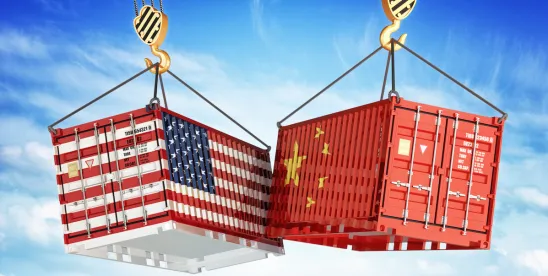What We Know
Q: What was the objective of USTR’s four-year review of the Section 301 tariffs, and what findings did USTR reach?
A: The statutorily mandated four-year review aimed to assess the effectiveness of the tariffs in addressing USTR’s view that China is engaging in unfair trade practices, particularly those related to technology transfer, intellectual property, and innovation. The Biden Administration’s review also considered the broader impact of these tariffs on the US economy, including effects on consumers, small businesses, and critical supply chains. As noted in the four-year review report, the additional tariffs, which have been in effect since 2018, have led to some positive changes. However, many of China’s technology transfer practices, including cyber intrusions and join venture requirements, persist. These findings have necessitated a series of new recommendations by USTR on modifying the Section 301 tariffs.
Q: Which products are subject to proposed tariff increases and when will these take effect?
A: USTR has proposed significant tariff increases on a variety of products from China in “strategic sectors,” mainly related to clean energy and technology, including electric vehicles (EVs), solar, and semiconductor products. These products represent an approximate trade value of $18 billion. The tariff increases detailed below will take effect in stages over the next three years, depending on the product category:
| CATEGORY | DUTY | DATE |
|---|---|---|
| EVs | Increase to 100% | August 1, 2024 |
| Semiconductors | Increase to 50% | January 1, 2025 |
| Solar Cells (whether or not assembled into modules) | Increase to 50% | August 1, 2024 |
| Steel and Aluminum Products | Increase to 25% | August 1, 2024 |
| Batteries and Battery Parts | ||
|
Parts of Non-Lithium-Ion Batteries
|
Increase to 25% | August 1, 2024 |
|
Lithium-Ion EV Batteries
|
Increase to 25% | August 1, 2024 |
|
Lithium-Ion Non-EV Batteries
|
Increase to 25% | January 1, 2026 |
| Facemasks | Increase to 25% | August 1, 2024 |
| Medical Gloves | Increase to 25% | January 1, 2026 |
| Natural Graphite | Increase to 25% | January 1, 2026 |
| Other Critical Minerals | Increase to 25% | August 1, 2024 |
| Permanent Magnets | Increase to 25% | January 1, 2026 |
| Ship to Shore Cranes | Increase to 25% | August 1, 2024 |
| Syringes and Needles | Increase to 50% | August 1, 2024 |
The complete list of products subject to the proposed tariff increases, including their classifications under the Harmonized Tariff Schedule of the United States (HTSUS), is provided in Annex A of the Federal Register notice.
Q: What will happen to the existing Section 301 tariffs?
A: The existing Section 301 tariffs on covered products will be maintained, subject to the limited exclusion process described below.
Q: Will there be a new exclusion process for Section 301 tariffs?
A: Yes, the notice has announced an exclusion process. However, it is currently limited to machinery used in domestic manufacturing for various industries, including textile, agriculture, construction, food, etc., with a special focus on solar manufacturing equipment.
First, USTR is establishing an exclusion process for certain machinery used in domestic manufacturing. The machinery eligible for a temporary exclusion are classified in Chapters 84 and 85 of the HTSUS and listed in Annex B of the notice. Exclusions granted through this process will be effective through May 31, 2025.
Second, USTR is proposing 19 temporary exclusions for solar manufacturing equipment, listed in Annex C of the notice. These exclusions are effective immediately and will remain in effect through May 31, 2025.
Q: How can stakeholders participate in the review process?
A: USTR is seeking public comments to evaluate the effectiveness of the proposed modifications in addressing China’s technology transfer practices and their impact on the US economy, including consumers. A public docket will be available for submitting comments beginning on May 29 and continuing through June 28. Detailed questions will be posted in the docket by May 24 to guide comprehensive feedback from stakeholders.
One of the areas for which comments are requested is whether the tariff subheadings identified in the notice adequately cover the products and sectors included in the President’s direction to USTR.
USTR is also requesting comments on both sets of proposed exclusions, including whether any machinery used in domestic manufacturing was omitted and should be included, and feedback on the scope of the proposed solar manufacturing machinery exclusions listed in Annex C.
Q: What measures are being recommended to enhance enforcement of Section 301 actions?
A: According to USTR’s four-year report, additional funds should be allocated to US Customs and Border Protection (CBP) to enhance the enforcement of Section 301 duties, as well as Section 201 and 232 duties. Moreover, USTR recommended increased collaboration between private companies and government authorities to combat state-sponsored technology theft.
What We Don’t Know (Yet)
Q: When will the final decision on the proposed tariff modifications be made?
A: While the proposed modifications have been announced, the exact timeline for the final decision on the proposed tariff modifications remains unclear. Stakeholders are encouraged to participate in the public comment process to weigh in on USTR’s proposal.
Q: What will happen to the 352 existing Section 301 exclusions set to expire on May 31?
A: The Federal Register notice did not specify whether the 352 existing Section 301 exclusions, set to expire on May 31, 2024, will be extended further.
Takeaways
USTR’s proposed modifications largely maintain the current Section 301 tariffs while making certain strategic changes to specific product categories targeted by China, or in sectors where significant US investments are being made. Companies and stakeholders should monitor these fast-changing developments to navigate these changes effectively. Companies planning to invest in domestic manufacturing should also consider participating in the public comment process to support the exclusion of the manufacturing equipment they will need in the United States.







 />i
/>i

